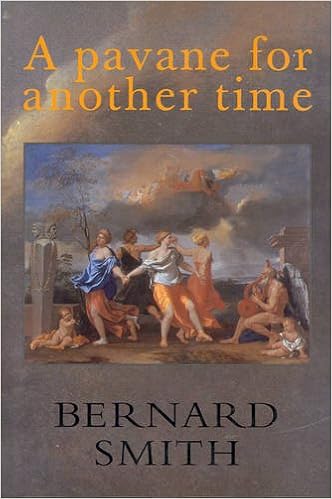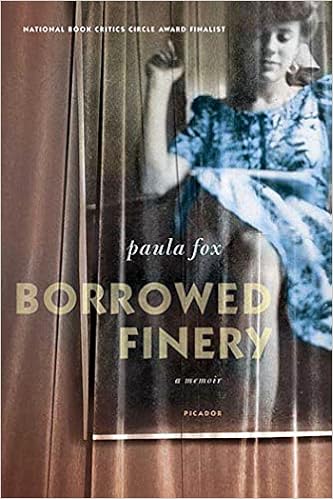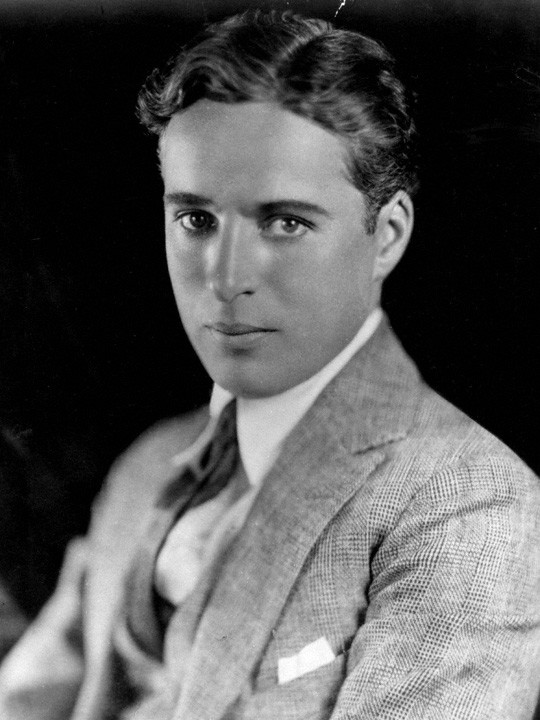Search Results
5677 results found with an empty search
- Michelangelo
Artists Michelangelo Michelangelo di Lodovico Buonarroti Simoni (1475-1564)was an Italian sculptor, painter, architect and poet of the High Renaissance born in the Republic of Florence, who exerted an unparalleled influence on the development of Western art. According to some sources, Michelangelo was already in foster care when his mother died in 1481. It appears he stayed on in foster care after his mother's death and worked alongside the other children in the family to cut stone from a local quarry. When he was seven, Michelangelo was sent to school and apprenticed to a fresco paint when he was thirteen. Several scholars have described Michelangelo as the greatest artist of his age and even as the greatest artist of all time. A number of Michelangelo's works of painting, sculpture and architecture rank among the most famous in existence. His output in these fields was prodigious; given the sheer volume of surviving correspondence, sketches and reminiscences, he is the best-documented artist of the 16th century. He sculpted two of his best-known works, the Pietà and David, before the age of thirty. awe. Attempts by subsequent artists to imitate Michelangelo's impassioned, highly personal style resulted in Mannerism, the next major movement in Western art after the High Renaissance. External Website
- A pavane for another time
Autobiography/Memoir A pavane for another time Bernard Smith 2002 Following art historian Bernard Smith's award-winning autobiographical account of his earlier life ("The Boy Adeodatus: the portrait of a lucky young bastard", first published in 1984) he now reflects on life in the 1940s. Themes recalling the period before the family departed for England in September 1948 include; courtship and marriage; forebodings of war and attitudes to Communism and Fascism; political involvement in cultural activities with artists and emigre European-trained art historians anxious to promote modern art and knowledge of art history (not taught in universities at that time) and early employment at the Art Gallery of New South Wales pioneering the arrangement of travelling exhibitions for regional centres. Smith's formative training as an art historian and critic is the important and recurring theme of this book. External Website
- News From the World
Autobiography/Memoir News From the World Paula Fox 2011 In her final book and second memoir, Paula reflects on aspects of her nomadic childhood, including the fraught relationship with her mother, Elsie, and her father's attempts to encourage her reading and curiosity about the world. The memoir includes Paula's adult life of raising her children as a single mother and of working as a tutor with children and young people in state care. External Website
- Re-reading Orphanhood
Academic Books & Book Chapters Re-reading Orphanhood Diane Warren and Laura Peters (Editors) 2020 Rereading Orphanhood (2020) edited by Diane Warren and Laura Peters is an examination from a range of contributors and perspectives of the “orphan figure in the long nineteenth century”. The intention of the book is to supplement and complement earlier important work and to ensure that the orphan is situated within wider contexts, eg, within children’s literature as well as within national belonging. The editors of the Rereading Orphanhood point out that orphanhood is “much more than a biological issue” in part because of socio-cultural constraints around the notion of family. External Website
- Academic Books & Book Chapters, E
Authors E Cultural, autobiographical and absent memories of orphanhood ➝ Back to Top
- Edmonia Lewis
Artists Edmonia Lewis Mary Edmonia Lewis, "Wildfire" (c. July 4, 1844 – September 17, 1907), was an African American sculptor, of mixed African-American and Native American (Ojibwe) heritage. Born free in Upstate New York, Edmonia was orphaned when young, some sources say at age five, some say at age nine. After her parents died it seems she was taken in by her mother’s family until she was twelve (although her older brother, Sunrise or Samuel W. Lewis claimed he’d taken care of her too). Samuel did finance Edmonia’s education, first in New York, where she was fostered with a Captain Mills and later at Oberlin College in Ohio in 1859.she worked for most of her career in Rome, Italy. She was the first African-American sculptor to achieve national and then international prominence. She began to gain prominence in the United States during the Civil War; at the end of the 19th century, she remained the only Black woman artist who had participated in and been recognized to any extent by the American artistic mainstream. In 2002, the scholar Molefi Kete Asante named Edmonia Lewis on his list of 100 Greatest African Americans.Her work is known for incorporating themes relating to Black people and indigenous peoples of the Americas into Neoclassical-style sculpture. External Website
- Mini & Me
Autobiography/Memoir Mini & Me Michael Cooper 2013 Michael 'Mini' Cooper knew he was different from an early age. Fiercely independent, he challenged injustice and questioned what he perceived to be the irrational belief systems of both parents and teachers alike. But no one wanted to listen and they didn't want him heard. After several failed attempts at beating him into submission, he fought back with devastating consequences. Michael Cooper didn't always know the truth but he understood the lie. Some have described him as a warrior of justice but for him it was always about the human spirit and the right to let breathe freely. External Website
- Don't Ever Cry
Autobiography/Memoir Don't Ever Cry Sue Martin 2007 Sue Martin was not three years old when she began life at her first children's home, a home that could at best be described as cold and regimented and at worst, tortuous and terrifying. External Website
- Jane Wyman
Actors Jane Wyman American actor Jane Wyman (1917-2007) was in foster care as a child. Wyman was born Sarah Jane Mayfield in Jackson County Missouri but was left with Emma and Richard Fulks after her parents divorced. Sarah Jane was about 3 at the time. She called herself Sarah Jane Fulks when she started school. In 1936, Sarah Jane Fulks became Jane Wyman and was signed up with Warner Brothers. After performing in many 'B' movies, Wyman was noticed for her work in The Lost Week (1945) although she continued playing supporting roles until she played a rape victim who was also a deaf-mute in Johnny Belinda (1948), for which she won an Oscar. Wyman also starred in a number of television shows and made for television films. She retired in 1962, making only an occasional appearance on television until she was cast as Angela Channing in Falcon Crest, a series which ran from 1981 to 1990 Jane Wyman married future president Ronald Reaga in 1940. He was her 3rd husband. The couple had one daughter, Maureen, in 1941 and they adopted a boy, Michael, in 1945. Jane and Ronald divorced in 1949. External Website
- Children out of place' : representations of foster care in the Australian news media
Academic Articles Children out of place' : representations of foster care in the Australian news media Damien King Riggs 2009 The provision of foster care in Australia has a long and contested history. These histories, along with current media representations of foster care, shape the ways in which the general public understand foster care. Importantly, and where such representations are primarily negative, it is likely that foster care will not be considered a viable option for many people seeking to engage in community work or to care for children. This paper provides an analysis of a sample of representations of foster care in the Australian news media, with a specific focus on the depiction of (1) foster children as “lost children” who are “damaged goods”, (2) foster care systems and social workers as inherently damaging to children, (3) foster carers as primarily either inadequate parents, or good parents only in comparison with “bad social workers”. The paper concludes by highlighting suggestions for future directions within media reporting of foster care in Australia. External Website
- Borrowed Findery
Autobiography/Memoir Borrowed Findery Paula Fox 2001 When Paula Fox was born to 19 year old Elsie and her partner, Paul - both screenwriters - she was immediately put into a foundling hospital. Paula's maternal grandmother, however, retrieved the baby and so began a nomadic childhood for Paula as she was moved around from foster care to kinship care and back again. Paula Fox reflects on this unusual childhood from the perspective of being in her 70s and after a late starting but long career as a successful writer. External Website
- What Makes a Family? The Radical Portrayal of Diverse Families in Australian Picture Books
Academic Articles What Makes a Family? The Radical Portrayal of Diverse Families in Australian Picture Books Sarah Mokrzycki 2020 Children’s fiction has a history of challenging family conventions, from the inevitable wicked stepmother throughout fairy tales to the orphaned protagonists of 19th century children’s novels. In recent years there has been a small, but important, increase in Australian published picture books that showcase family diversity. However, family diversity is still a contentious issue in Australian picture books. Divergence from the traditional or nuclear family model, whether by structure, culture, gender or sexuality, remains nothing short of radical. The most common portrayal of a ‘typical’ Australian picture book family is white, middle class, with both biological parents and a male child protagonist. Australian picture book families are not just traditionally ‘intact’, but heteronormative, able-bodied, fully biological and highly gendered. External Website
- The politics of good intentions and what I’ve learned from Romania’s ‘orphans’
Academic Articles The politics of good intentions and what I’ve learned from Romania’s ‘orphans’ Mariela Neagu 2021 A history of child protection (yet to be written) would reveal a history of good intentions that often led to abuse, lost childhoods and struggling adults. The children sent to Australia and Canada after the First World War until the late 1960s or placed into adoption against their mothers’ will (as in Philomena’s story) are such examples. External Website
- Eddie Murphy
Actors Eddie Murphy Eddy Murphy (born April 3, 1961) is an American actor, comedian, writer, and singer. Eddie's parents split up when Eddie was three, and his mother contracted tuberculosis a year later. While their mother was sick and recuperating, Eddie and his older brother, Charlie, were put into a foster home with a Ms Jenkins for approximately 18 months. Eddie Murphy rose to fame on the sketch comedy show Saturday Night Live, for which he was a regular cast member from 1980 to 1984. Murphy has also worked as a stand-up comedian and was ranked No. 10 on Comedy Central's list of the 100 Greatest Stand-ups of All Time. In some films he plays multiple roles in addition to his main character; this is intended as a tribute to one of his idols, Peter Sellers. External Website
- Niki de Saint Phalle
Artists Niki de Saint Phalle Niki de Saint Phalle (born Catherine-Marie-Agnès Fal de Saint Phalle, 29 October 1930 – 21 May 2002) was a French-American sculptor, painter, and filmmaker. Widely noted as one of the few female monumental sculptors, Saint Phalle was also known for her social commitment and work. Niki was born near Paris as Catherine-Marie-Agnes Fal de Saint Phalle to an aristrocratic French banker, André, and an American woman, Jacqueline Harper. In 1929 the stock market crash that precipitated the Great Depression had occurred, and 12 months later the French economy was in difficulties. Niki’s parents decided they would be better off in America and so they left their small baby with her paternal grandparents in Nievre, three hours from Paris. The couple’s son, John, travelled to America with his parents. Three years later, Niki was sent for. Her father was working again as a banker and the family was based in Manhattan, on the Upper East Side. After an early marriage and two children, Niki began creating art in a naïve, experimental style. She first received worldwide attention for angry, violent assemblages which had been shot by firearms. Her idiosyncratic style has been called "outsider art"; she had no formal training in art, but associated freely with many other contemporary artists, writers, and composers. External Website
- Transmedia Harry Potter: Essays on Storytelling Across Platforms
Academic Books & Book Chapters Transmedia Harry Potter: Essays on Storytelling Across Platforms Christopher E Bell 2019 Transmediation-the telling of a single story across multiple media platforms-is a relatively new phenomenon. While there has been adaptation-books to films, for example-for more than a century, modern technology and media consumption have has expanded the scope of transmediating practices. Nowhere are these more evident than within the Harry Potter universe, where a coherent world and narrative are iterated across, books, films, video games, fan fiction, art, music and more. Curated by a leading Harry Potter scholar, this collection of new essays explores the range of Potter texts across a variety of media. External Website
- Charlie Chaplin (Actor)
Actors Charlie Chaplin (Actor) Sir Charles Spencer Chaplin (16 April 1889 – 25 December 1977) was an English comic actor, filmmaker, and composer who rose to fame in the era of silent film. Chaplin's childhood in London was one of poverty and hardship, as his father was absent and his mother struggled financially, and he was sent to a workhouse twice before the age of nine and spent time in the Hanwell Schools for Orphans and Destitute Children. When he was 14, his mother was committed to a mental asylum. He became a worldwide icon through his screen persona, "The Tramp", and is considered one of the most important figures in the history of the film industry. His career spanned more than 75 years, from childhood in the Victorian era until a year before his death in 1977, and encompassed both adulation and controversy. The 1940s were a decade marked with controversy for Chaplin, and his popularity declined rapidly. He was accused of communist sympathies, and some members of the press and public found his involvement in a paternity suit, and marriages to much younger women, scandalous. An FBI investigation was opened, and Chaplin was forced to leave the United States and settle in Switzerland. External Website
- Children's Homes. A History of Institutional Care for Britain's Young
Academic Books & Book Chapters Children's Homes. A History of Institutional Care for Britain's Young Peter Higginbotham 2017 What image does the word orphanage conjure up in your mind? A sunny scene of carefree children at play in the grounds of a large ivy-clad house? Or a forbidding grey edifice whose cowering inmates were ruled over with a rod of iron by a stern, starched matron? In Children's Homes, Peter Higginbotham explores the history of the institutions in Britain that were used as a substitute for children s natural homes. From the Tudor times to the present day, this fascinating book answers questions such as: Who founded and ran all these institutions? Who paid for them? Where have they all gone? And what was life like for their inmates? Illustrated throughout, Children's Homes provides an essential, previously overlooked, account of the history of these British institutions. External Website
- Tiffany Haddish
Actors Tiffany Haddish Eritrean-American actor and comedian, Tiffany Haddish (1979) was in residential, foster and kinship care as a child. Tiffany Haddish was born in Los Angeles, California. She was around 3 years old when her father, a refugee from Eritrea, abandoned the family. When Tiffany was nearly 9, her mother, Leola, had a car accident and suffered brain damage which made it difficult to care appropriately for her children. Tiffany therefore spent several years in the foster care system from the age of 12 or 13 before going to stay with her grandmother. Tiffany’s social worker encouraged the girl to attend the Laugh Factory Comedy Camp to learn how to do stand-up comedy. Haddish credits the Comedy Camp with having changed her life. After guest-starring on several television series, Haddish gained prominence with her role as Nekeisha Williams on the NBC sitcom The Carmichael Show. After appearing in the 2016 comedy film Keanu, her breakthrough came in 2017 with her role as Dina in the comedy film Girls Trip, for which she garnered critical acclaim. In 2017, she published her memoir, The Last Black Unicorn.Haddish currently stars in the TBS series The Last O.G. and recently voiced Tuca in the Netflix animated series Tuca & Bertie. External Website
- Carol Grace
Actors Carol Grace Carol Grace (b. September 11, 1924 – July 21, 2003) was an American actress and author. She is often referred to as Carol Marcus Saroyan or Carol Matthau. Mother Rosheen Marcus gave birth to Grace aged 16 - who said Leslie Howard was the father. Carol married writer William Saroyan twice (she said he was abusive) and then actor Walter Matthau. She was placed in foster care until the age of eight. She has written about her experiences in The Secret in the Daisy. External Website














